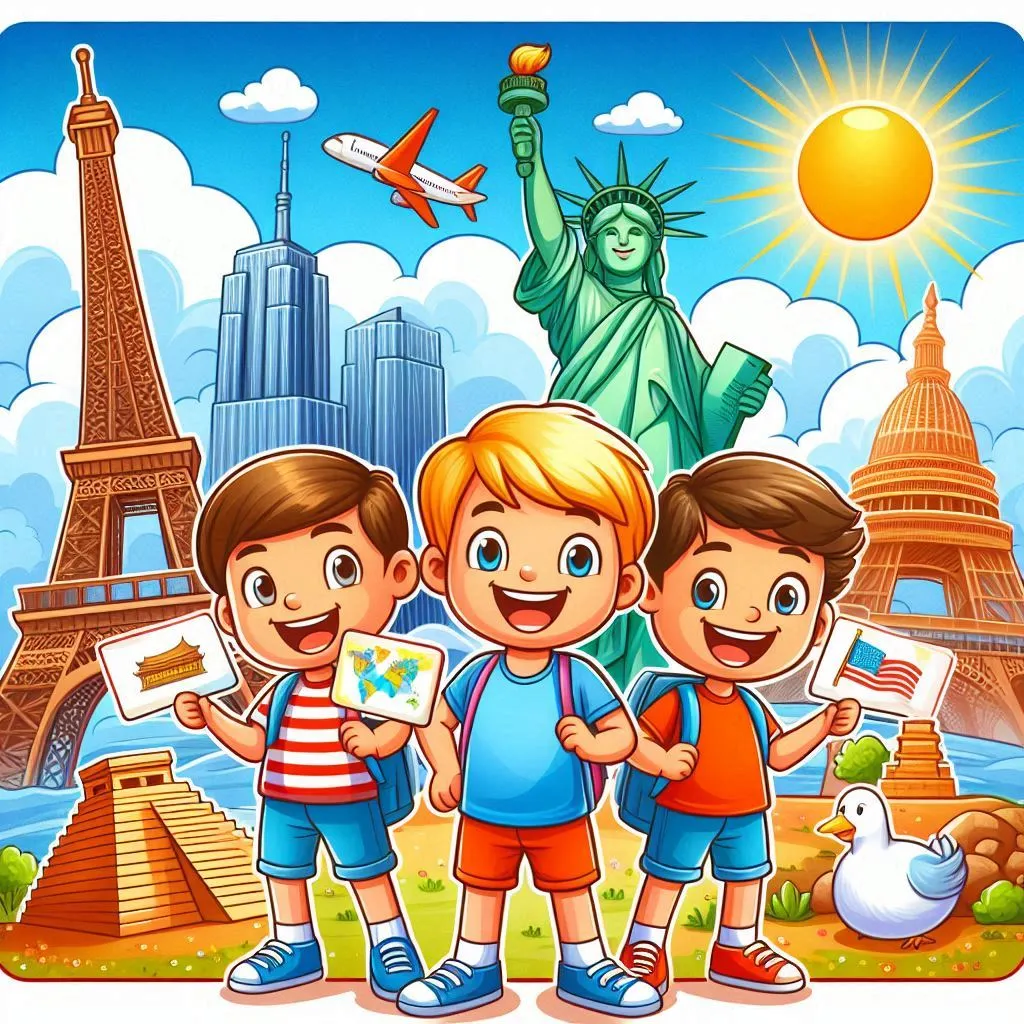Journey Through Landmarks: Fun Facts About Places Flashcards

Landmarks are the storytellers of our world. They stand tall as symbols of history, culture, and human achievement, inviting us to explore the past and dream about the future. With "Journey Through Landmarks: Fun Facts About Places Flashcards," learners of all ages can embark on a fascinating adventure across continents, discovering the wonders that make each place unique. This blog will guide you through the importance of landmarks, how flashcards can make learning about them fun, and share captivating facts that will inspire curiosity and a love for exploration.
What Are Landmarks and Why Do They Matter?
Landmarks are distinctive features—natural or man-made—that help us identify and remember places. They can be ancient wonders, modern marvels, or breathtaking natural formations. Landmarks serve as cultural touchstones, representing the identity and heritage of a community or nation. They are often the backdrop for important events, celebrations, and stories passed down through generations. Learning about landmarks helps children and adults alike develop a sense of place, pride, and global awareness.
How Flashcards Make Learning About Landmarks Engaging
Flashcards are a proven educational tool that combine visual and textual information for effective learning. When it comes to landmarks, flashcards can feature vivid images, interesting facts, and key vocabulary, making it easier to remember details and spark meaningful discussions. Whether used in classrooms, at home, or during travel, flashcards encourage active participation, critical thinking, and curiosity. They are especially helpful for visual learners and can be adapted for different age groups and learning styles.
Types of Landmarks to Explore
- Historical Landmarks: Ancient ruins, castles, and monuments that tell the story of civilizations—like the Pyramids of Egypt, the Colosseum in Rome, or the Great Wall of China.
- Architectural Marvels: Iconic buildings and structures such as the Eiffel Tower, Sydney Opera House, or Burj Khalifa, showcasing human creativity and engineering.
- Natural Wonders: Majestic mountains, waterfalls, canyons, and rock formations—think of Mount Everest, Niagara Falls, or the Grand Canyon.
- Cultural Sites: Temples, mosques, churches, and shrines that reflect the spiritual and artistic heritage of different societies.
- Modern Attractions: Amusement parks, observation towers, and city skylines that represent contemporary culture and innovation.
Fun Facts About Famous Landmarks
- The Eiffel Tower was originally intended to be a temporary structure for the 1889 World's Fair in Paris, but it became a beloved symbol of France.
- The Great Wall of China stretches over 13,000 miles and was built over centuries to protect against invasions.
- The Statue of Liberty was a gift from France to the United States and stands as a symbol of freedom and hope.
- Machu Picchu in Peru was hidden from the outside world for centuries and is now one of the most visited archaeological sites in the world.
- The Sydney Opera House's unique design was inspired by the sails of ships in Sydney Harbour.
- Mount Everest, the highest point on Earth, continues to rise a few millimeters each year due to tectonic activity.
- The Taj Mahal changes color depending on the time of day and the light, appearing pink in the morning, white in the afternoon, and golden at night.
- Stonehenge in England is over 4,000 years old, and its true purpose remains a mystery.
Benefits of Using Landmarks Flashcards
- Visual Memory: Associating images with facts helps learners retain information longer.
- Cultural Awareness: Understanding the significance of landmarks fosters respect for different cultures and histories.
- Geographical Skills: Locating landmarks on maps improves spatial thinking and global knowledge.
- Language Development: Learning new words and phrases related to landmarks enhances vocabulary and communication skills.
- Inspiration for Travel: Discovering new places can spark a lifelong interest in travel and exploration.
How to Use Landmarks Flashcards Effectively
- Matching Games: Match landmark images with their names or countries for a fun memory challenge.
- Storytelling: Encourage learners to create stories or imagine adventures involving different landmarks.
- Map Activities: Place flashcards on a world map to visualize where each landmark is located.
- Research Projects: Assign a landmark to research and present interesting facts to the group.
- Travel Planning: Use flashcards to plan dream trips and learn about travel etiquette and customs.
Landmarks for Different Age Groups
For young children, focus on colorful images and simple facts about well-known landmarks. Older students can dive deeper into the history, architecture, and cultural significance of each site. Flashcards can also be used for language learning, geography lessons, and even art projects inspired by famous landmarks.
Encouraging Curiosity and Exploration
Landmarks are more than just tourist attractions—they are windows into the stories of humanity and the wonders of nature. By using flashcards, learners can develop a sense of curiosity, respect for diversity, and a desire to explore the world. Whether you are a parent, teacher, or lifelong learner, "Journey Through Landmarks: Fun Facts About Places Flashcards" offers a creative and interactive way to discover the places that shape our world.
Conclusion
Embarking on a journey through landmarks with flashcards is an exciting way to connect with the world's most fascinating places. From ancient wonders to modern marvels, each landmark has a story to tell and a lesson to teach. With engaging visuals, fun facts, and interactive activities, these flashcards make learning about places memorable and inspiring. So, pick up your flashcards, set out on an adventure, and let the world's landmarks ignite your imagination and curiosity!